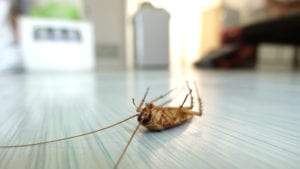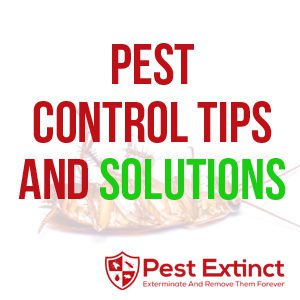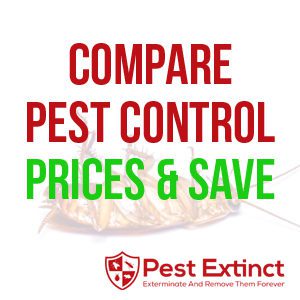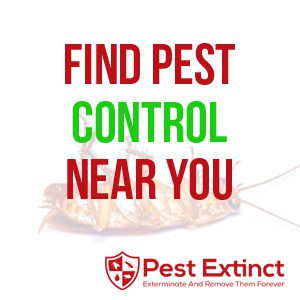
Top 10 Pest Prevention Tips in 2023
Keeping your home free of pests can be a daunting task, but with a little knowledge and the right strategies, it is possible to prevent a pest infestation. Here are the top ten tips for pest prevention in 2023.
1. Seal Entry Points: One of the most effective ways to prevent pests from entering your home is by sealing all possible entry points. This includes cracks in the walls, gaps around doors and windows, and openings where utility pipes enter your home. You can use materials like caulk or steel wool to seal these areas.
2. Keep Your Home Clean: A clean home is less attractive to pests. Regular cleaning helps eliminate food sources and hiding spots for pests. Pay special attention to areas where food is prepared and consumed. Regularly clean under appliances, behind furniture, and inside cupboards.
3. Proper Food Storage: Store food properly in sealed containers to prevent pests from accessing it. Never leave food out overnight, and promptly clean up crumbs or spills.
4. Regularly Empty Trash: Regularly emptying trash bins and ensuring they are tightly sealed helps minimize food sources for pests.
5. Eliminate Standing Water: Pests like mosquitoes breed in standing water. Regularly check your home and yard for areas where water collects and eliminate them. This could be in blocked gutters, kiddie pools, and plant pots.
6. Regularly Inspect for Pests: Regular inspections can help you catch a pest infestation early. Look for signs of pests like droppings, damage to furniture or walls, and unusual sounds.
7. Maintain Your Yard: Regular yard maintenance can help prevent pests. Trim trees and shrubs near your house, keep grass cut short, and remove any fallen fruit or nuts from your yard.
8. Avoid Bringing Pests Inside: Be mindful when bringing items inside from outdoors. Check furniture, potted plants, and other items for signs of pests before bringing them indoors.
9. Consider a Pest Control Service: Regular inspections from a professional pest control service can help identify potential problems before they become serious. These professionals are trained to identify early signs of pests and can provide treatment options.
10. Stay Informed: Pest control strategies are always evolving, and staying informed about the latest techniques and treatments can help you prevent an infestation.




By following these tips, you can reduce the chances of a pest infestation and enjoy a pest-free home in 2023.
Signs of a Pest Infestation in Your Home
Identifying the presence of pests early on can make a big difference in controlling an infestation. Here are some signs that you may have a pest problem in your home.
- Unusual Sounds: Many pests like rodents and insects are active at night. You might hear scratching, scampering, or rustling sounds within your walls or ceiling during quiet times.
- Pest Droppings: Finding droppings in your home is a clear sign of an infestation. Different pests have different droppings. For instance, mouse droppings are typically small, rod-shaped, and dark-colored, while cockroach droppings may resemble black pepper or coffee grounds.
- Physical Damage to Home or Belongings: Pests often cause noticeable damage. Look out for gnaw marks on furniture, holes in walls or floors, damaged wiring, and small piles of sawdust which can be a sign of termite activity.
- Unpleasant Odors: Certain pests, like mice or roaches, can produce a distinct, unpleasant odor. If you notice a strange smell that you can’t identify, it might be due to a pest infestation.
- Nests or Hives: Pests need a place to live. If you discover nests in your insulation or hives around your property, it’s likely you have a pest problem.
- Dead Bugs Indoors: Finding dead bugs in your home is another sign of an infestation. If you frequently find dead bugs on your window sills or floors, their living counterparts are likely not far away.
- Evidence of Nesting: Rodents in particular are known to create nests using shredded paper, fabric, or plant material. If you find these sorts of materials in hidden areas, it could indicate the presence of pests.
If you notice any of these signs, it’s time to take action. Contact a pest control professional who can accurately diagnose your problem and offer an effective solution. Your home is your sanctuary and taking quick action can help ensure it remains pest-free.
You’ve Found a Pest Problem: Now What?
Discovering a pest problem in your home can be unsettling. Here’s what you can do to handle the situation efficiently and effectively:
Step 1: Stay Calm
It’s important not to panic. While pest infestations can seem overwhelming, there are professionals trained to handle these situations and help return your home to its pest-free state.
Step 2: Identify the Pest
If possible, try to identify the type of pest you’re dealing with. This can provide valuable information to the pest control professionals and help them devise an effective plan of action.
Step 3: Don’t Try to Handle it Alone
While it might be tempting to handle the infestation yourself, it’s generally best to leave pest control to the professionals. They have the experience, equipment, and knowledge to deal with pests safely and efficiently.




Step 4: Contact a Pest Control Professional
Find a reputable pest control company in your area and arrange for them to visit your home. They can conduct a thorough inspection, confirm the type of pest, assess the extent of the infestation, and recommend a suitable treatment plan.
Step 5: Prepare for the Pest Control Visit
Depending on the type of pests and the chosen treatment method, you may need to prepare your home for the pest control visit. This could involve cleaning, decluttering, or temporarily moving out of your home.
Step 6: Follow-Up Treatments
In many cases, one treatment may not be enough to completely eradicate the pests. Be prepared to schedule follow-up treatments and inspections to ensure the problem has been fully addressed.
Step 7: Prevention is Better Than Cure
Once the infestation is under control, it’s crucial to take steps to prevent future pest problems. This could involve regular inspections, keeping your home clean and decluttered, and making your property less attractive to pests. Finding pests in your home is certainly a hassle, but with swift action and the help of professionals, it doesn’t have to become a nightmare.
Most Common Pest Infestations and How to Prevent Them
The types of pests you might encounter can vary based on your geographic location, the time of year, and the condition of your home. However, some pests are universally common in homes across the globe. Here’s how to prevent these common pests from infesting your home:
Ants
Ants are attracted to food, especially sweet or sticky substances. Keep your kitchen clean, seal food in airtight containers, and quickly clean up any spills. Regularly check for signs of ants and seal any cracks or crevices through which they may enter your home.
Cockroaches
Cockroaches thrive in dirty, cluttered spaces. Maintaining cleanliness is crucial in preventing a cockroach infestation. Regularly take out the trash, avoid leaving dirty dishes overnight, and keep food storage areas clean and dry.
Rats and Mice
Rodents are drawn to homes that provide food, water, and shelter. Keep your home clean, store food properly, and seal gaps around your home that could serve as entry points. If you see signs of rodents, such as droppings or gnaw marks, it’s time to call a professional.
Bed Bugs
Bed bugs are notorious hitchhikers and can come home with you from hotels, public transport, or other infested areas. Regularly inspect your sleeping areas and wash your bedding in hot water. If you suspect a bed bug infestation, professional treatment is necessary.
Termites
Termites can cause serious damage to your home’s structure. Keep wood-based materials dry and away from your home’s foundation, maintain a gap between soil and wood portions of your home, and schedule regular professional inspections to detect early signs of an infestation.



Flies
Flies breed in decaying organic matter. Regularly take out the trash and clean your garbage cans. Keep your doors and windows screened to prevent flies from entering your home.
Mosquitoes
Mosquitoes breed in standing water. To prevent them, eliminate any sources of stagnant water around your home, such as old tires or blocked gutters.
Fleas
Fleas often enter homes on pets. Regularly check your pets for fleas and keep them on preventative treatments. Vacuum frequently and wash pet bedding regularly.
Remember, the key to preventing most infestations is regular maintenance and cleanliness. If you do spot signs of an infestation, it’s best to call a pest control professional immediately.
Pest Control Options
Once an infestation has been identified, it’s time to consider your pest control options. The right approach depends on the type of pest you’re dealing with, the extent of the infestation, and your personal preferences regarding pest management methods. Here’s a breakdown of some of the most common types of pest control:
1. Chemical Pest Control
This is the most common type of pest control, which involves the use of various pesticides to eliminate pests. This can be very effective, but it’s important to note that some pesticides can be harmful to humans and pets. It’s always best to leave the application of these chemicals to professionals.
2. Biological Pest Control
This method involves using the natural enemies of pests to control their populations. For instance, introducing beneficial insects like ladybugs can help control aphid populations in your garden. This method is eco-friendly but can take more time to show results.
3. Physical Pest Control
This involves using physical means to eliminate pests, such as traps for rodents or sticky traps for insects. This method can be very effective for small infestations and is often used in conjunction with other methods.
4. Electronic Pest Control
These are devices that use ultrasonic or electromagnetic waves to repel pests. They are generally safe for humans and pets, but their effectiveness can vary.
5. Heat Treatments
This method is commonly used for bed bugs and termites. The infested area is heated to a high temperature that pests can’t survive. This method is often favored for its eco-friendliness and high effectiveness.
6. Fumigation
In severe cases of infestation, fumigation may be necessary. This involves filling the infested space with gaseous pesticides, or fumigants, to suffocate or poison the pests. It’s a highly effective method, but it requires the home to be vacated and can be more costly.
7. Integrated Pest Management (IPM)
IPM involves a combination of techniques such as biological control, habitat manipulation, modification of cultural practices, and the use of resistant varieties. It aims to provide a long-term solution to pest problems with minimal harm to the environment.




When it comes to choosing a pest control option, a professional pest control service will be able to assess your specific situation and recommend the most effective and safe treatment. Keep in mind that the best pest control strategy is always prevention, but when pests do make their way into your home, know that there are plenty of options to get them out.
Understanding the Difference Between a Pest Problem and a Pest Infestation
When it comes to pests in your home, understanding the difference between a minor pest problem and a full-blown pest infestation is essential.
Occasional Intruders Versus Established Colonies
A pest problem often refers to occasional intruders in your home. For instance, a cockroach or two appearing in your kitchen during a season change, or a few ants marching along your countertop, can be considered a pest problem. These pests are often solitary invaders that have not established a colony inside your home, and with prompt action, they can be removed without further issues.
On the other hand, a pest infestation implies that pests have not only entered your home but have also established a colony or nesting site and begun reproducing. An infestation often involves a large number of pests and indicates that they’ve found an environment within your home conducive to their survival and reproduction. Signs of an infestation could include sighting a large number of pests, finding damage caused by pests, or noticing signs of nesting.
Significance of Identifying the Severity
Identifying the severity of your pest issue is crucial as it directly influences the approach to pest control. A minor problem can often be managed with DIY methods, such as sealing entry points, maintaining cleanliness, or using store-bought pest control products.
In contrast, a pest infestation typically requires professional help due to the sheer number of pests and the potential for extensive property damage or health risks. Pest control professionals have the necessary tools, products, and expertise to thoroughly eradicate pests and ensure they do not return. Keep in mind that a minor pest problem can quickly escalate into an infestation if not addressed promptly and effectively. Therefore, even if you’re dealing with a few pesky intruders, it’s crucial not to underestimate the situation. Whether it’s a single pest or a colony, immediate action is the key to preventing a full-blown infestation.




Maintaining a Pest-Free Environment: Tips and Practices
Maintaining a pest-free environment in your home doesn’t have to be a Herculean task. With a few simple preventative measures and routines, you can ensure your living spaces remain free of pesky intruders. Here are some tips and practices to help you achieve this:
Keep Your Home Clean
Pests, from tiny fruit flies to large cockroaches, are often attracted to areas where they can find food and shelter. Regularly clean your home, ensuring you wipe down kitchen surfaces, sweep floors, and clean up any food crumbs or spills promptly. It’s crucial not to leave dirty dishes overnight as they can become an inviting breeding ground for pests.
Secure Potential Entry Points
Ensure all windows and doors in your home are in good repair and consider installing fix nets or screens to keep flying insects out. Regularly check your home for cracks, holes, and gaps, especially around utility pipes, and seal any you find. These openings can serve as entry points for pests.
Manage Your Outdoor Spaces
Overgrown gardens, piles of leaves, or stagnant water fountains can provide perfect habitats for pests. Keep your garden tidy and trimmed, regularly clean out gutters, and ensure water features do not become stagnant. If you have a compost pile, ensure it’s well-maintained and located far from your home.
Store Food Properly
Pests can easily be attracted to improperly stored food. Use containers with tight-fitting lids for food storage, and don’t leave ripe fruit out for extended periods. Ensure your garbage bins are also well-sealed to prevent them from becoming a food source for pests.
Check Your Plumbing
A leaking pipe or a dripping tap creates a water source that can attract many pests. Regularly check your plumbing fixtures for leaks and address any issues promptly.
In conclusion, preventive measures are the best way to keep pests at bay. However, if you do encounter a pest problem, it’s essential to act quickly. Whether you choose DIY pest control methods or decide to hire professionals, swift action can prevent a minor pest problem from escalating into a major infestation.



Establishing Effective Habits for Pest Prevention
Establishing effective habits in your everyday routines can help prevent pests from finding your home an attractive place to settle. Here are a few more tips using the keywords you’ve provided:
Keep Kitchen Counters Clean
Kitchen counters can often become a hotspot for food particles, especially after meal preparation. Ensure you wipe down your counters on a regular basis to remove any crumbs or spills. This helps to eliminate potential food sources that can attract pests.
Manage Pet Food Properly
If you have pets in your home, be sure to manage their food properly. Leaving pet food out overnight or for extended periods can draw pests. Instead, serve pet food at specific times and promptly remove any leftovers. Store pet food in containers with tight-fitting lids to keep pests out.
Regular Garbage Disposal
Regular garbage disposal is a good idea to keep pests at bay. Make sure to take out the trash on alternate days or as soon as the bin is full. Never allow garbage to overflow as this can invite pests. If possible, use garbage bins with lids to prevent pests from gaining access to food waste.
Seal Cracks on Exterior Walls
Over time, exterior walls can develop cracks and holes which can act as entry points for pests. Regularly inspect your exterior walls for any such openings and seal them promptly. In addition, make sure that your window screens are in good shape and repair any damage to prevent pests from getting inside.
Routine Cleaning
Maintaining cleanliness on a regular basis goes a long way in pest prevention. This involves regularly vacuuming and mopping floors, wiping down surfaces, and washing dishes promptly. This can help ensure you remove any food particles that may have fallen unnoticed.
Being vigilant and proactive can save you a lot of trouble when it comes to pest control. Remember, it’s not just about taking action once pests have invaded your home – prevention is always better and often much easier than cure. Adopting the right habits can help keep your home pest-free all year round.
Costs of Hiring a Pest Control Service
The cost of hiring a pest control service can vary greatly depending on the nature and severity of the infestation, the type of pests, and the size of your property. Here are some average costs you might expect to encounter:
- Initial Inspection: A pest control service will typically begin with an inspection to assess the nature and severity of the infestation. This can range from free to $150.
- Single Pest Control Visit: For a one-off visit to handle a specific pest issue, you might expect to pay between $100 to $300. However, this price can escalate for more serious infestations.
- Infestation Treatments: If your home is infested with pests like bed bugs or termites, treatment can be more costly due to the persistence of these pests and the extent of the treatment needed. Bed bug treatments can range from $300 to $5,000 depending on the severity and size of the infestation. Termite treatments can range from $500 to $2,000.
- Regular Maintenance Visits: Many pest control services offer regular maintenance visits to prevent future infestations. These can be monthly, bi-monthly, or quarterly and typically cost between $40 to $60 per visit for monthly plans, or $100 to $300 for quarterly plans.
It’s important to get a quote from the pest control service before committing, as prices can vary based on your specific circumstances. Always ensure that the quote includes all services, guarantees, and follow-up visits.




Top 10 Pest Control Services in 2023
- Orkin: With over 100 years of experience in the industry, Orkin is known for its comprehensive pest control solutions and excellent customer service. Their experienced technicians handle all types of pests, including rodents, insects, and wildlife.
- Rentokil: As a global leader in pest control, Rentokil provides innovative and environmentally friendly solutions. They offer both residential and commercial services and have a reputation for professionalism and expertise.
- Terminix: One of the largest pest control companies, Terminix is renowned for its termite and mosquito control services. Their pest control plans are comprehensive and come with a satisfaction guarantee.
- Ehrlich: Ehrlich offers a range of pest control services with a particular focus on using environmentally conscious methods. Their technicians are well-trained and offer customized solutions to fit specific pest problems.
- Aptive Environmental: Known for its commitment to eco-friendly practices, Aptive provides effective treatment for a wide range of pests. Their plans are flexible and their services are backed by a satisfaction guarantee.
- Arrow Exterminators: Arrow Exterminators offer a wide range of services including pest control, termite protection, and wildlife control. They are known for their customer-centric approach and quality service.
- Massey Services: Specializing in prevention, Massey Services offers customized pest control, termite protection, and landscape services. Their money-back guarantee and emphasis on customer satisfaction have earned them a strong reputation.
- Cook’s Pest Control: Operating in the southeastern U.S., Cook’s Pest Control offers comprehensive pest control, termite protection, and mosquito control. They are known for their reliability and highly trained technicians.
- TruGreen: While primarily a lawn care company, TruGreen also provides reliable and effective pest control services. They specialize in outdoor pests that can damage your yard or make outdoor spaces less enjoyable.
- PestRoutes: Ideal for small and medium-sized pest control companies, PestRoutes offers a powerful, user-friendly software platform that streamlines operations. Their technology helps businesses increase efficiency and improve customer service.
Remember, when choosing a pest control service, it’s essential to consider the specific pest issues you are facing, the reputation of the company, and the value of the services they provide.




Adopting Sustainable Pest Control Practices
Adopting sustainable and preventive measures is the first line of defense against pests. Not only do these practices help to keep the pests at bay but they also contribute to the overall cleanliness and safety of your environment. Here’s how you can integrate these methods into your routine.
- Waste Management: Regularly disposing of waste is one of the simplest yet most effective methods of pest control. Pests are often attracted to commercial facilities and homes due to the availability of food sources in waste. Implementing a robust waste management strategy, including regular waste disposal and using bins with tight-fitting lids, can significantly reduce the likelihood of a pest infestation.
- Maintaining a Dry Atmosphere: Many pests, including roaches and mosquitoes, thrive in damp atmospheres. Regularly checking for leaks and maintaining a dry, well-ventilated environment, especially in indoor areas, can discourage pests from making themselves at home.
- Use of Essential Oils: Certain essential oils act as natural deterrents for pests. For instance, peppermint oil is known to repel ants and spiders, while lemongrass oil can help deter mosquitoes. Using these oils in your cleaning routine or diffusing them in your space can help to maintain a pest-free environment.
- Professional Pest Control Services: Despite taking preventative measures, there might still be situations where professional help is necessary. If you identify signs of a severe infestation, don’t hesitate to call a professional pest control company. These experts have the necessary tools, products, and training to deal with the issue effectively and safely.
Adopting these practices can help you stay one step ahead of potential pest problems. However, remember that each situation is unique. It’s crucial to evaluate the specific needs of your home or commercial facilities before implementing any pest control strategy.

Leave a Reply